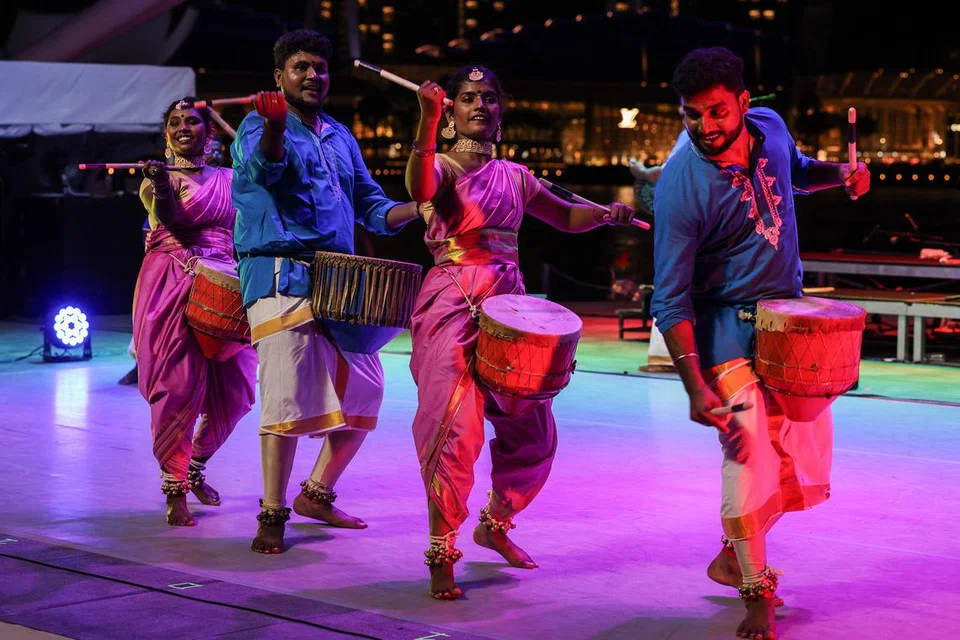Decades ago, from the vibrant streets of Tamil Nadu to the majestic courts of Maharashtra, each region showcased its unique music and dance art form that played a significant role in Indian culture.
For example, the parai (drum) was used to announce the news in an era where phones did not exist; the thudumbu (large drum) was played to celebrate the return of the king from hunting or after his victory in war; and the urumi and thavil were played at the temples to mark various occasions.
Many of these traditional artforms, however, experienced a steep decline over the years.
“The Tamil Nadu government has listed the top 100 traditional artforms that are facing downfall and sadly, a few of them are practised by fewer than 10 groups today,” said Mr M. Ilangovan, 57 a traditional dance teacher, choreographer and Kalaimamani (highest civilian award in Tamil Nadu) recipient.
In light of this, the Anandha Traditional Arts & Music (ATAM), an arts organisation in Singapore, along with the Indian Heritage Centre (IHC) and other local arts groups have stepped up to help revive and raise awareness of such traditions.
At the Esplanade on Aug 30 and 31, they organised the Anandha Kondattam, a cultural festival that featured a diverse array of traditional Tamil art performances.
Each evening featured two shows spanning three hours in total, featuring performances ranging from kolattam and thudumbattam to thiruvathira (Kerala dance) and poikkal kuthirai.
“Language and culture are the cornerstones of identity for people of Indian origin,” said Mr. R. Rajaram, chairman of the IHC advisory board and adviser to the Tamil Language Council.
“Inextricably linked, culture and arts embody the essence of our heritage. Take folk songs, for example – through simple, relatable lyrics, they vividly capture the nuances of daily life, preserving tradition and passing it down through generations.
“It is crucial for Singapore’s youth to connect with their cultural roots, and the most effective way to do so is through the arts. By learning traditional elements, the next generation can ensure the continued vibrancy of our cultural heritage.”
Mr C. Neelamegan, assistant regional director of the Kanchipuram District Department of Art and Culture in Tamil Nadu, expressed his appreciation for Singapore’s support to preserve and promote these traditional art forms.
“It is great to see the Singapore Indian communities and art groups coming together to support the initiatives and raise awareness of the art forms among youngsters,” he said.
Folk singer Suganthi, who performed at the Esplanade, said it was always her dream to perform the songs her mother, a former agricultural worker, used to sing during the 60s and 70s.
“The lyrics of songs from each region are a reflection of its unique culture,” she said.
“These songs evoke raw emotions, and it’s essential to share them with everyone, so they can live on forever.”

